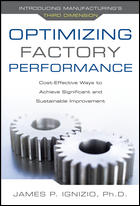Cost Versus…
WHAT WE PAY FOR WHAT WE GET.

A cost-benefit analysis is a decision-making tool. It is a process of adding up the benefits of doing something or buying something and subtracting the costs to help us decide whether that purchase or action is worthwhile. Some benefits, and some costs, can be intangible, but it is an effective exercise used by businesses, governments, and even individuals. We have all performed this analysis even if we did not know there was a technical term for it.
Have you ever wanted that new gadget but passed on buying it because it just wasn’t in your budget? Or didn’t buy that new car because it was more economical to keep your current car for one more year? Those are both decisions made when costs outweighed the benefits.
Have you ever driven home from work, feet aching and tired, and decided to stop at the corner store for that gallon of milk instead of the market? Ever grabbed fast food at lunch? These are both examples of instances where convenience, i.e. time, outweighed the costs.
Many of these benefits are intangible, but in those moments we are able to assign a value to our aching feet, to our wants, to our needs. Other times those intangibles can be difficult to pinpoint.
Ever gone to the movies to relax and come home more agitated than before? Thinking, “That movie was horrible. I can’t believe I just wasted two hours and $15”? It is simply a bit of buyer’s remorse but illustrates the importance of planning for the intangibles within a cost-benefit analysis.
In this month’s measurement article, author David Wick writes, “In today’s competitive markets there’s a lot to be said for getting the functionality you need without spending more than you have to. When it comes to choosing systems for critical measurement applications cost is always an issue, as it should be. But there are others as well; after all, there’s no right price for the wrong system.”
In determining what system meets your needs and offers the best price, Wick writes, “It is critical to remember that the price tag is only one factor. There are considerations that can have significant financial consequences, directly affecting your total cost of ownership and operation.”
These considerations include accuracy, flexibility, speed, efficiency, and ease of use.
As Wick concludes, “Buying the most economical system that meets your needs just makes sense, and finding that system need not be complicated.”
It just means first identifying your priorities and, to the best of your ability, anticipating future requirements and identifying the capabilities needed to meet those needs. Second, adding in cost of labor, including setup, operation, possible downtime, and other incidentals. And finally, comparing your options.
Sounds familiar.
For more, read “Sophisticated Metrology on a Budget.” And for the latest on the importance of calibration, check out “Quality Depends on Calibrated Measurements” and “Calibration of Measuring Equipment,” all in the pages of this month’s Quality.
Enjoy and thanks for reading!
Looking for a reprint of this article?
From high-res PDFs to custom plaques, order your copy today!










